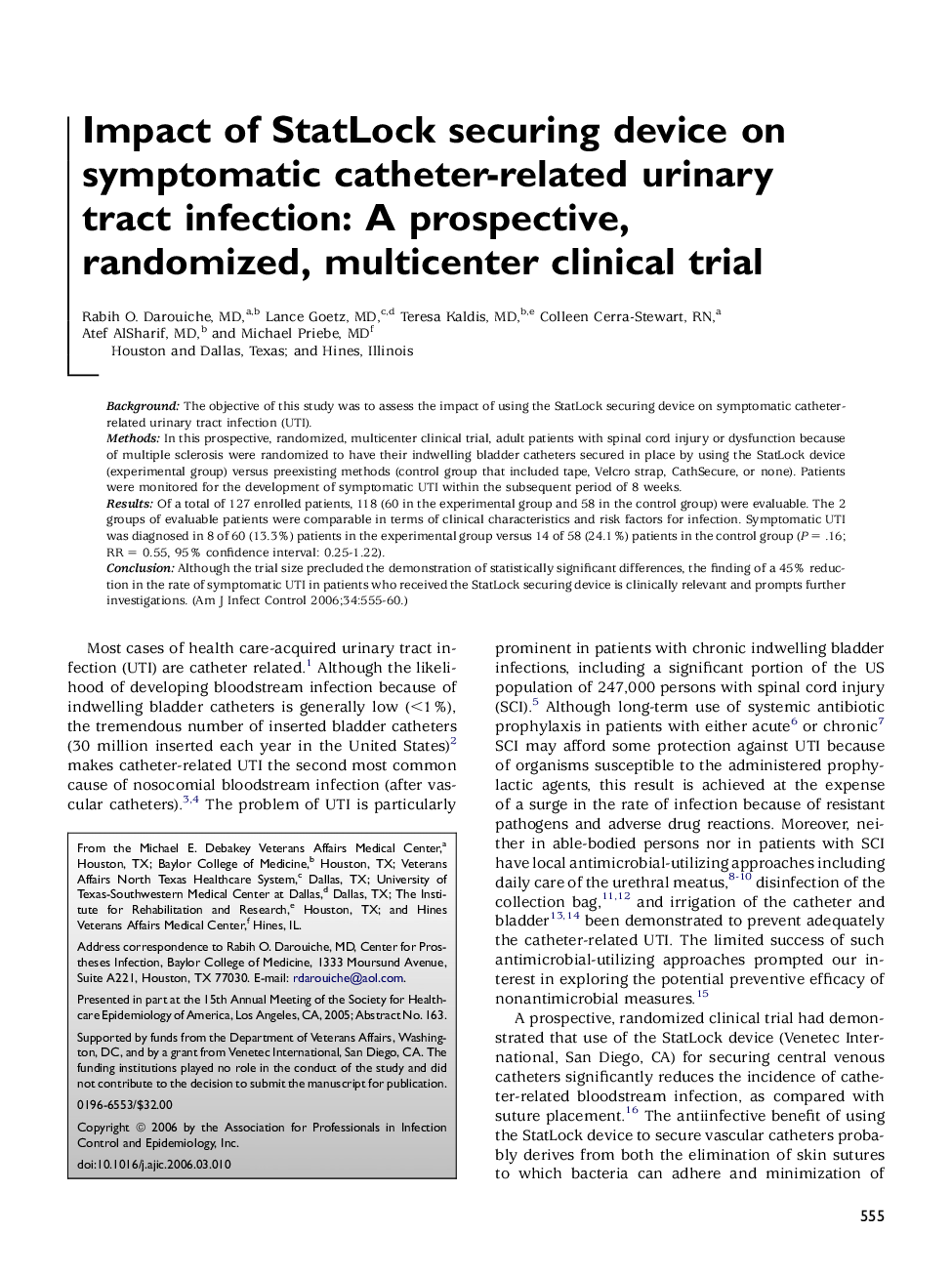| Article ID | Journal | Published Year | Pages | File Type |
|---|---|---|---|---|
| 2640512 | American Journal of Infection Control | 2006 | 6 Pages |
BackgroundThe objective of this study was to assess the impact of using the StatLock securing device on symptomatic catheter-related urinary tract infection (UTI).MethodsIn this prospective, randomized, multicenter clinical trial, adult patients with spinal cord injury or dysfunction because of multiple sclerosis were randomized to have their indwelling bladder catheters secured in place by using the StatLock device (experimental group) versus preexisting methods (control group that included tape, Velcro strap, CathSecure, or none). Patients were monitored for the development of symptomatic UTI within the subsequent period of 8 weeks.ResultsOf a total of 127 enrolled patients, 118 (60 in the experimental group and 58 in the control group) were evaluable. The 2 groups of evaluable patients were comparable in terms of clinical characteristics and risk factors for infection. Symptomatic UTI was diagnosed in 8 of 60 (13.3%) patients in the experimental group versus 14 of 58 (24.1%) patients in the control group (P = .16; RR = 0.55, 95% confidence interval: 0.25-1.22).ConclusionAlthough the trial size precluded the demonstration of statistically significant differences, the finding of a 45% reduction in the rate of symptomatic UTI in patients who received the StatLock securing device is clinically relevant and prompts further investigations.
